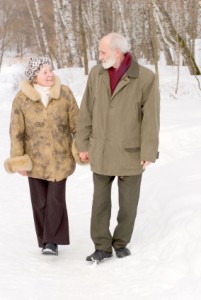Ski season is in full swing, as are skiing injuries. If you ski often, you know that hand, shoulder and elbow injuries are common as you or someone you know likely have experienced one.
Here are a list of many of the injuries I treat throughout the winter season.
Skiier’s Thumb: The second most common skiing hand injury behind wrist fratures. This injury occurs when the ski pole is held between the thumb and the index finger gets tangled during a fall, placing excess stress on the thumb bending in a direction opposite to the index finger tearing the ulnar collateral ligament (see figure) Once called “gamekeeper’s thumb” due to its assiciation with the stress placed on the thumb when sacrificing game, this injury can lead to chronic thumb pain with pinch and grasp.
This injury to the ligament can range from a mild sprain to a full rupture, which can be tested by exam, x-ray to rule out frature, and occasionally MRI. If the ligament is completely torn, it sometimes gets caught behind the adductor muscle insertion and is called a “stener lesion” indicating it’s need for surgical treatment.
My treatment algorithm includes casting or bracing for mild to moderate sprains, and surgical repair or reconstruction for complete unstable tears.
Prevention of such thumb injuries usually include eliminating the use of straps on ski poles.
Wrist Fracture: Most common in snowboarders, falling on an outstretched hand can cause injuries to the end of the forearm, wrist, hand and finger bones. Over 25% of snowboarding injuries occur in the wrist. For displaced fractures, often a deformity is seen which requires the bone to be set and even sometimes warrants surgical correction to allign the fracture (a “broken bone” is the same as a “fracture”).
The most common fracture is the distal radius fracture. One of the easiest ways to prevent wrist injuries is to learn how to fall correctly – falling forward should be broken by the knees and the forearm a backwards fall should be in a rolled position.
Shoulder Dislocations:
Shoulder dislocations usually are extremely painful injuries occurring from a fall on an outstretched hand or through a twisting fall. Usually the shoulder dislocates in a forward direction causing an obvious bulge in the front of the shoulder. Sometimes the shoulder can be pulled back in successfully, but many dislocations require an anesthetic for reduction.
Shoulder dislocations are often associated with fractures or tears of the muscles or ligaments surrounding the shoulder which can increase the probability of recurrent dislocations. With documented dislocations, over 85% redislocate in the future, eventually requiring surgery.
I perform most surgeries arthroscopically for such dislocations and the success of shoulder stability after surgery is greater than 90%.
Shoulder Separation
Often confused with a shoulder dislocation, this is a direct fall on the shoulder itself, causing a separation of the clavicle from the shoulder blade. This injury can range from mild to severe, but rarely requires surgery. The pain eventually subsides, but often a mild deformity persists. Surgery is reserved for severe cases or persistent pain.
Fractures about the Shoulder
The most common fracture is a Clavicle fracture, commonly known as a collorbone fracture. Common in both kids and adults, both snowboarders and skiiers, most people know someone who has had such an injury if they have not already had one themselves.
These collorbone fractures are easy to diagnose by exam and x-ray. Rarely the bone sticks through the skin, requiring surgery. Most fractures can be treated with a sling quite successfully with a residual bump.
There are recent studies that suggest that severely displaced fractures might be best treated with surgery to restore normal shoulder function, especially in overhead activities.
Other shoulder fractures include fractues of the Upper Humerus. These fractures can either be stable or unstable, with unstable fractures requiring surgery. Likewise, Elbow fractures can also simply be classified as stable or unstable and often need surgery if unstable.
Rotator Cuff Tears
The rotator cuff includes four important shoulder muscles acting to stabilize the ball and socket joint of the shoulder. Violent excessive eccentric force to the shoulder can often result in a tear to the tendon of these muscles resulting in significant swelling, pain and weakness.
Rotator cuff tears increase in prevalence with age as the integrity of the tendon and muscle decreases. Maintaining muscle strenthening excercises decrease the probability of a tear.
Rotator cuff tears can be partial or complete and usually require advanced imaging such as an MRI to diagnose. Usually partial thickness rotator cuff tears can be treated with rehabilitation alone, but acute full thickness tears of the rotator cuff usually require surgery. I treat rotator cuff tears both arthroscopically or through a mini-open incision and can usually be performed in an outpatient setting.

